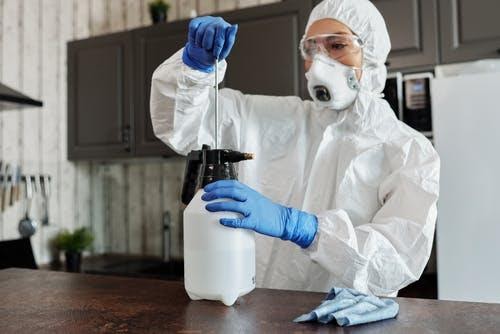You wouldn’t like to work at a place that exposes you to disease, right? Normally, the employers at companies ensure that the employees have a safe working environment, but there are some jobs that come with inherent hazards, which could cause long-term, or even terminal diseases, without us even realizing it. Therefore, regardless of the type of career you have, it’s crucial to consider the occupational hazards that come with it and how to effectively deal with them.
You cannot show recklessness here as it involves your health. Handling chemicals or toxic materials and working with pathogens are common occupational hazards that everyone might be aware of, but there are some occupational hazards that are lesser known.
Here, we have compiled a list of the occupational hazards that might be harming your health, and the preventive measures that you can incorporate to avoid them.
Harmful substances
Regardless of the type of job, we’re constantly exposed to harmful substances present all around us, and they may be harming our bodies each day without our knowledge. Due to the increased industrial activity, air pollution has become a hazard of the modern times. Gases, like radon, can reach hazardous levels, even inside buildings, and lead to an increased risk of cancer in people inhaling the air filled with these deadly, toxic gases.
Perhaps the most dangerous work toxin and carcinogen is asbestos. Used in various manufacturing and construction industries, asbestos can release tiny fibers or particles that, when inhaled or ingested, can cause the mesothelioma cancer. If you work in construction or manufacturing, visit this website to know all about mesothelioma, its treatment and preventive measures.
Apart from asbestos, there are a great many carcinogenic chemicals used in everyday cleaning products, like formaldehyde and other cancer-causing chemicals. To limit your exposure, use gloves and choose cleaning products that don’t contain cancer-causing chemicals.
Biohazards
healthcare professionals are often exposed to biohazards that include viruses, fungi, and bacteria that can cause contagious diseases. Also, cuts from needlesticks can expose you to biohazards such as HIV in the healthcare settings. In fact, 800,000 needlestick injuries are known to occur each year in the U.S. alone.
However, you don’t have to be in a healthcare setting to be exposed to biohazards. Congested office spaces are places where simple human interactions can lead to germ transfers and people often get infected with flu or other diseases because they work in such close proximity.
To prevent exposure to biohazards, and to continue your job safely, it’s best to maintain workplace cleanliness and adopt hygienic habits like washing hands regularly. Protective gear, such as gloves, masks and other PPE equipment can be lifesavers for healthcare professionals.
Safety hazards
Whether you’re a firefighter or an office employee, everyone has to contend with safety hazards. A cluttered workplace is one of the most common safety hazards that places your health and well-being at risk. Working in a messy area not only increases stress but also increases the chances of you stumbling or injuring yourself by falling.
If you work with heavy machines, one mistake can lead to irreversible physical damage. Furthermore, working at heights is another safety hazard that can lead to death by falling. Those working in construction or industrial workplaces are more prone to this safety hazard than others. To prevent falling from a height, use railings and other support structures. Employers should put warning signs for danger for employee awareness, so that they can avoid getting into harm by accident or neglect of their own.
Ergonomic hazards
The modern workplace environments are not suitable for your body, and if proper preventive measures are not taken, our bodies could deal with irreparable damage. The nurse that walks all day on hard, concrete floor, tending to patients non-stop develops aches in the back and legs; a computer programmer who has to spend hours sitting in front of the computer can develop body posture issues; or the writer that types all day is at a higher risk of developing carpal tunnel syndrome; these are some of the ergonomic hazards of the modern workplaces.
To avoid ergonomic hazards, it’s best to avoid sitting for long periods of time and ensure you work in a comfortable environment that doesn’t cause excessive physical strain. It’s essential to give your body a break at work every once in a while. Following a healthy diet and staying physically active in the evenings are crucial for keeping yourself healthy if you sit at the desk all day.
Conclusion
We’re surrounded by hazards of all kinds at our work, and sometimes we are not even aware of the dangers that workplace hazards pose. Instead of jeopardizing your health and career, you should follow the preventive measures mentioned above if you are working with the four common workplace hazards.
















